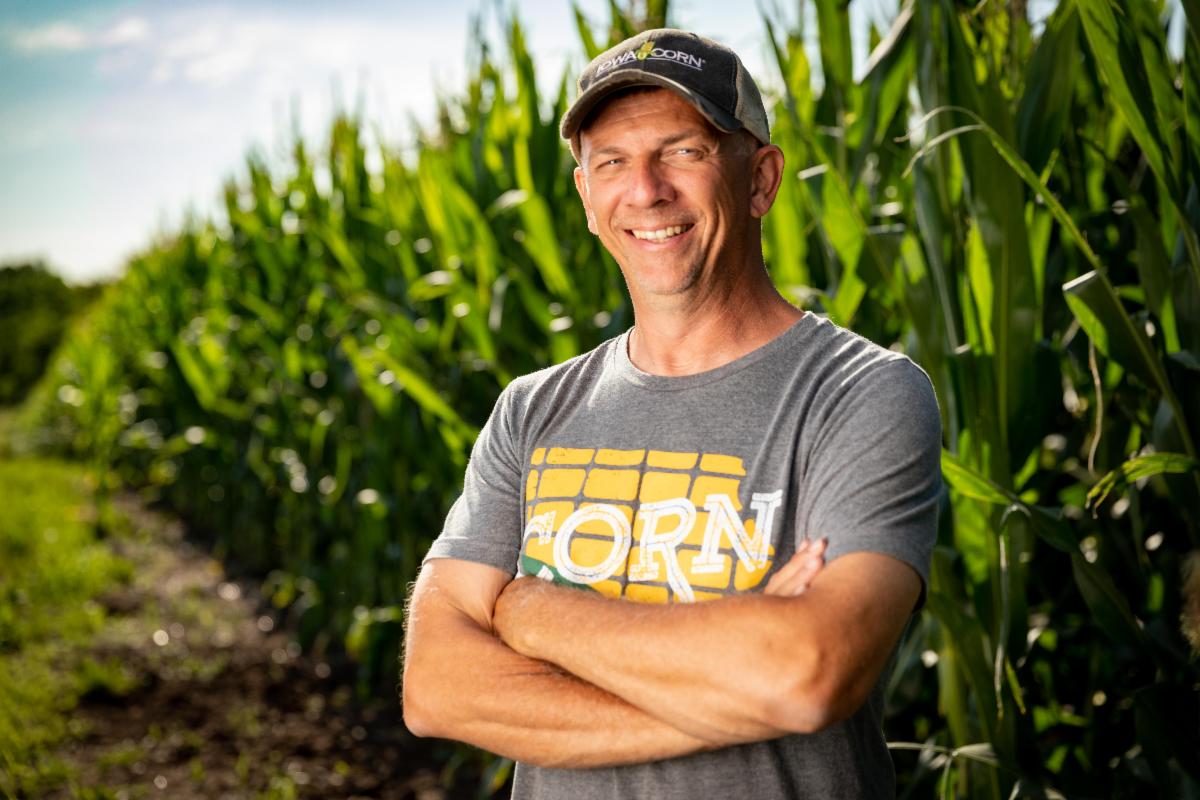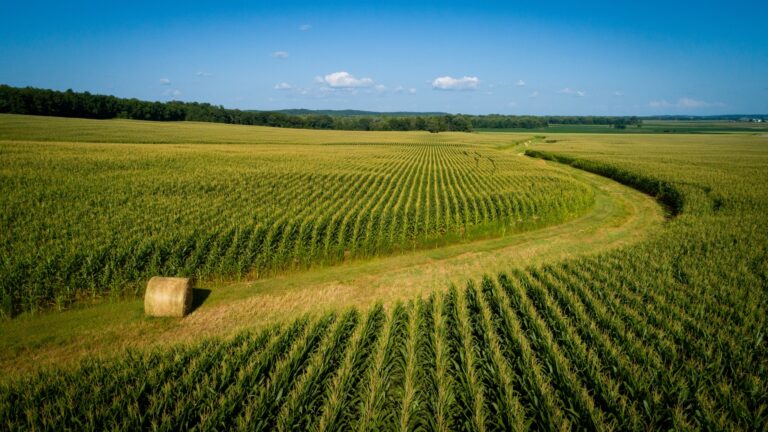2024 January Stewardship Advocate
Happy New Years and best wishes for a successful 2024!
This month’s Stewardship Advocate focuses on farm data protection. It poses a series of questions for farmers to consider before sharing their data. Iowa Corn has a strong interest in supporting and advocating for the protection of data generated by farmers. We believe farm data is your valuable intellectual property and you should be the one deciding if and how data can be used by others, including governments and public and private entities.
You can start your decision-making process about data protection with these questions:
1. Why are you sharing data with a provider*?
- Consider what value you expect in return for sharing the data. For example, will you receive a discounted product, reduced cost of management or agronomic advice or some other benefit from the provider?
2. What can the provider do with the farm data?
- Farmers who give their data to a provider should receive clear statements from the provider that acknowledge how they will use, share and store the data. These components of the data use should be spelled out in the data agreement.
3. What is the name of the provider, organization or institution and who outside the provider will have access to your data?
- You need to know the legal name of the provider that is receiving the data and ask who in the provider’s organization will see the data. Ask if there are subsidiaries and other entities associated with or outside the provider that may get access to your data under the data agreement.
4. Do the provider’s data agreements address ownership of your farm data?
- You own the information generated on your farm. However, you are responsible for agreeing on data use and sharing conditions with other stakeholders with an economic interest. These include tenants, landowners, cooperatives, owners of precision agriculture system hardware, and/or other providers. The farmer contracting with the provider should ensure that only the data they own or have permission to use is included in the account with the provider.
5. Will the provider notify me when data agreements are changed and inform me how the agreements were altered?
- You should insist on language in the contract that you be informed of any changes in the data agreement. Additionally, you should be able to terminate the agreement and retrieve your data if you are dissatisfied with changes to the agreement.
6. What happens if my data is compromised or sold?
- If the provider experiences a breach and data is compromised or released without authorization, they must inform you immediately with the notice and the plan to prevent breaches in the future.
- A breach of data security should allow you to terminate the data-sharing agreement.
- Do your homework to find out whether the provider has had any breaches or cases where data privacy policies were violated.
- If the provider is sold to another entity, you need to be informed of this transaction and be allowed to terminate their current data agreement with the seller and renegotiate a new data agreement with the buyer.
Bring in your support team
It is advisable to have an attorney or trusted advisor review the terms of the agreement and make you aware of any concerns or omissions in the agreement. To be safe, you should always read the data agreement from the provider.
The Iowa Corn Promotion Board is developing a multi-page grower guide on protecting farmer data. Check your mailbox in early February to see the full guide.
* Provider refers to entities with whom farmers data enter into agreements. They may be companies, government agencies, universities, nonprofits and other organizations.
LATEST INFORMATION:
Secretary Naig: “Iowa Remained a Production Powerhouse”
Truterra Opens 4 Programs, Highlighting Options for Long-Term Adopters
Farmland Values Remain Strong, Expected To Stabilize In 2024
Long-term drainage water recycling affects soil health and soil properties
Technology Helps Kingland Target, Apply Conservation
Economics of Soil Health Systems
Nominations Open for The Fertilizer Institute’s 4R Advocate Program
Nutrients Where Needed: How to Prep Your Soil Fertility for a Vertical System
FARMER TO FARMER: LANCE LILLIBRIDGE

Lance Lillibridge and his family farm in Benton County near the town of Vinton. The operation includes Lance, his wife Heidi, son Ty and daughter Tess. Lance has farmed in the current location for the last 20 years but has been a farmer his whole life.
Besides growing all waxy corn, the Lillibridges also have a cow-calf herd of registered Red Angus cattle to diversify their operation. Lance says, “As a family farm, we believe it is important to be diversified. Even though our cattle herd is relatively small, they are a critical part of our farm. We started with the cattle when kids were younger. They took a liking to them right away. We traveled almost every weekend to shows with the kids and the cattle for a couple years. It really instilled a work ethic in them.”
He continued, “With both corn and livestock, we all have a role to play but we work together to get the job done. I feel it is important to share what I have learned with my family members. Knowing the ‘what’ and ‘why’ of our operation ensures everyone is on the same page.”
Environmental and economic sustainability are hallmarks of the Lillibridge farming operation. “We are a family that uses sustainable cropping and beef production practices to ensure a future in agriculture for the next generation. Nothing is sustainable unless it is profitable, so efficiency is always at the top of the list of goals. With that being at the top, environmental benefits and soil health fall into place much easier.”
Lance is always trying to learn about new technology and practices and figure out if they will work on his farm. Take his strip-tilling operation as an example. “In my earlier days on this farm, I was a heavy tillage guy. That’s what I was used to doing, so I never thought twice about turning the soil black. But then in 2009, I started seeing ruts in my fields after heavy rainfalls and I got tired of fixing them over and over again. I knew there had to be a better way. The next year, I tried strip-tilling my fields and I was amazed how much time I was saving, and I was using a lot less fuel and wear and tear on myself and my equipment. I realized I did not need my tillage equipment because I was cutting out a couple of trips across the field every season. I’ve been strip-tilling ever since.”
But the unexpected ‘aha’ moment for Lance was what he noticed about his soil. He saw more earthworms and the heavy rains were soaking in much faster than when he was tilling. He says, “I really didn’t know what or why this was happening, but I realized I was building up my soil health and I can’t describe how great that felt. Once I started using cover crops in 2016, I added another practice that was improving my soil health.” He plants combinations of oats, radishes, turnips and red clover ahead of his corn crop.
Lance plants waxy corn and has alfalfa for his cattle herd. He typically plants a range of corn maturities, from 105–115 day hybrids to spread his risk and fall workload. He plants a population of 34,000 seeds per acre and usually gets his corn in the ground in late April through the first week of May. He applies most of his nitrogen in the fall with a nitrogen stabilizer but side-dresses with “Y-drops” in some fields as needed. He notes that planting waxy corn has its’ unique quirks, “All of my corn is waxy and I usually come out ahead of typical No. 2 yellow corn because I get a nice premium. However, it is a little more challenging because I have to work with my elevator on delivery because they only take in waxy corn a couple days per week. I’m fortunate to have good on-farm storage so I can haul corn when they’ll take it.”
Great soil health was a huge advantage in 2023. “We had less than 6 inches of rain during the growing season but I recognized that the soil health I had built up over the years really pays off in a drought year like 2023,” shared Lance. “My fields have better water holding capacity and I imagine there was a lot of microbial activity below ground to help feed my crop. I have also observed that my applied nutrients perform better in healthy soil. My corn yields were off from years past, but they were better than I expected considering how little rain I got.”
Lance knows that every farming operation is different, “What works on our farm may not work for someone else. And it takes patience when trying a new practice. I have found it takes a minimum of three years to see a consistent change in results from a new practice.”
In addition to his busy schedule on the farm, Lance is an active member of the Iowa Corn Growers Association. He has served as president and is currently a director at large. “Being engaged in Iowa Corn helps us tell the story of agriculture to others. If we are not educating and informing non-farmers, then they will make assumptions about what we do. We want to show and tell that we are good stewards of the land, and we are doing things to improve our productivity and profitably while caring for our family and the environment.”
UPCOMING EVENTS:
January 30 – February 1: Iowa Ag Expo – Des Moines
February 5 – 9: ISU Planter University – Multiple Locations
February 6: Farmer to Farmer Conference – Peosta
February 7: Community Approaches to Pesticide Resistance Management; Bryan Emmett, USDA – Agricultural Research Service – Webinar
February 8: Woodchips and Water Quality: Exploring Species and Chipping Methods to Maximize Bioreactor Efficiency – Webinar
February 12-13: 2024 Agribusiness Association of Iowa Showcase & Conference – Altoona
February 21: Examining EPA’s New Approach to ESA Compliance When Making FIFRA Decisions – Webinar
